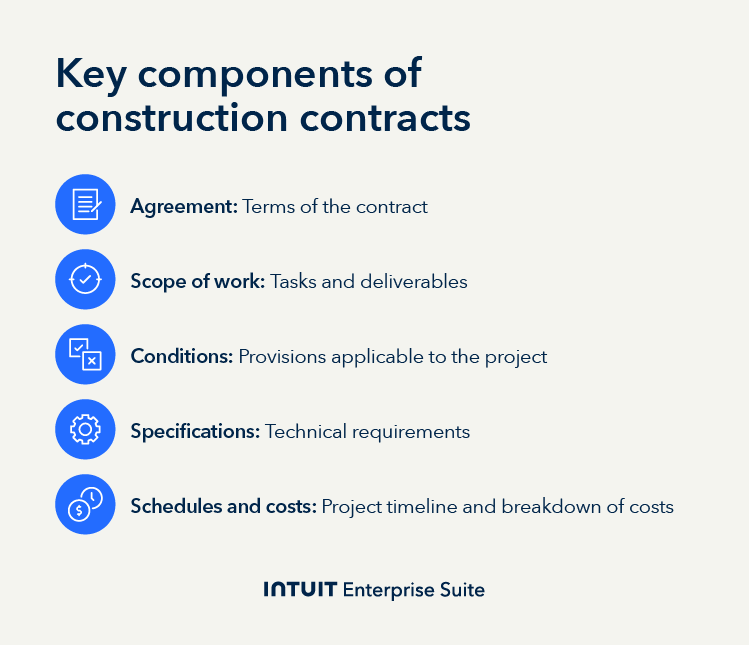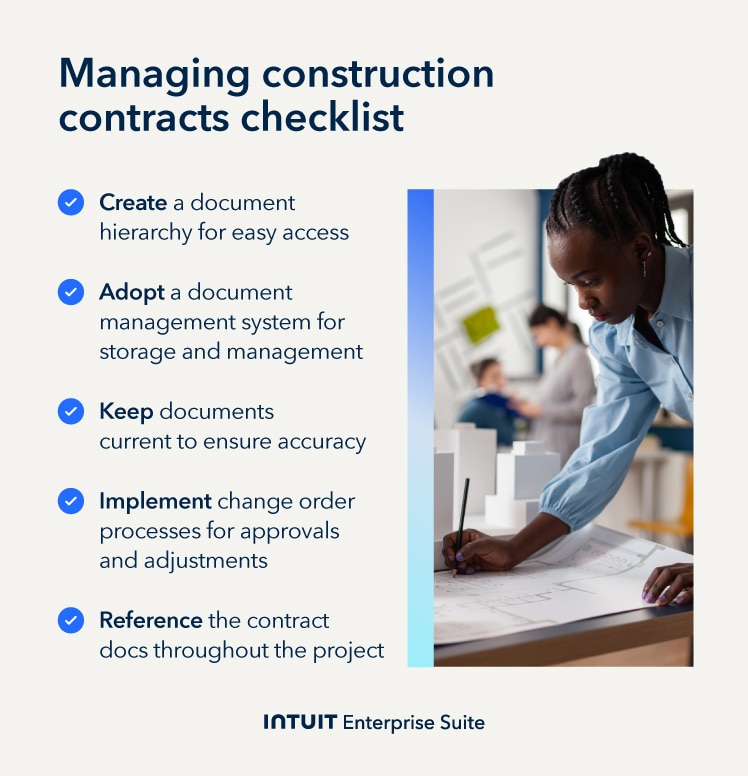1. Cost-plus
A cost-plus contract covers the contractor’s actual project expenses plus a profit margin, which may be either a fixed sum or a percentage of the total costs. It provides flexibility for projects where the scope may change or unforeseen issues might arise.
This type of contract offers transparency and flexibility, making it easier to manage changes and unexpected conditions. However, the lack of a fixed total can lead to higher costs and less certainty about the final price. Proper construction inventory management is key to avoiding cost overruns.
Example: In a large-scale lab renovation where the exact scope of hazardous material removal is unknown, a cost-plus contract might allow for a safe and flexible budget without the contractor having to inflate their bid to account for unknown risks.
2. Design-build
In a design-build contract, one entity is responsible for both the design and construction of the project. This integrated approach can streamline communication and expedite the project timeline, as the design and construction phases overlap.
The design-build method simplifies project management by providing a single point of contact and often results in faster completion. That said, it may limit your control over the design process and can lead to higher initial costs due to the integrated approach.
A recent study by the Design-Build Institute of America, however, found that design-build projects are delivered 102% faster than traditional methods—so a higher price tag may be worth it.
3. Guaranteed maximum price
A guaranteed maximum price (GMP) contract limits the total project cost. The client agrees to pay the contractor up to this maximum amount, and any savings below this limit are typically shared between the client and contractor.
The GMP contract offers cost control with a fixed upper limit, encouraging the contractor to complete the project under budget. However, it might include a higher initial price to cover potential risks and can complicate the process of managing scope changes.
Example: A contractor might bid $20 million on a project with an estimated cost of $18.5 million to create a $1.5 million buffer for unexpected issues, which they then might share with the client if the project comes in under budget.
4. Incentive construction
Incentive construction contracts provide additional compensation to the contractor for achieving specific goals, such as completing the project ahead of schedule or under budget.
These contracts encourage high-performance and cost-effective solutions, which can potentially lead to significant savings. On the downside, disputes may arise over the achievement of goals, and the contract may result in higher initial costs due to the incentive structure.
Example: A contractor might earn a $5,000 bonus for every day they finish ahead of schedule, up to a maximum amount. This encourages the contractor to work more efficiently and innovatively, which can lead to significant savings for the client through reduced overhead and earlier project completion.
5. Integrated project delivery contract
Integrated project delivery (IPD) contracts involve all major project stakeholders—owner, architect, and contractor—in a single collaborative team. They aim to align interests and share risks and rewards among the participants.
IPD contracts foster collaboration and innovation, leading to more efficient processes and enhanced outcomes. However, setting up and managing an IPD contract can be complex, and disagreements among team members may pose challenges.
That said, according to research by Dodge Data & Analytics, projects using the Integrated Project Delivery (IPD) method are twice as likely to be completed under budget and three times more likely to be completed ahead of schedule compared to projects using traditional methods.
6. Lump-sum contract
A lump-sum, or fixed-price, contract involves the contractor completing the project for a predetermined total amount. It includes all costs related to labor, materials, and overhead.
With this contract, you gain cost certainty and simplified budgeting, as the total price is agreed upon upfront; however, it provides less flexibility for changes. Also, a fixed budget might lead a contractor to cut corners, potentially compromising the quality of the work.











